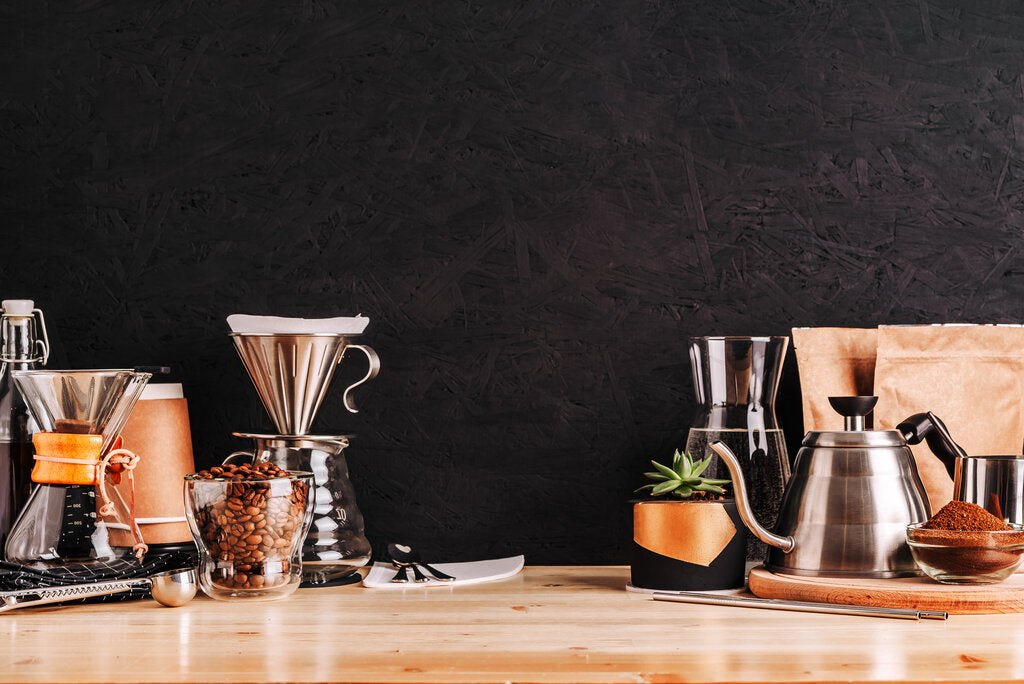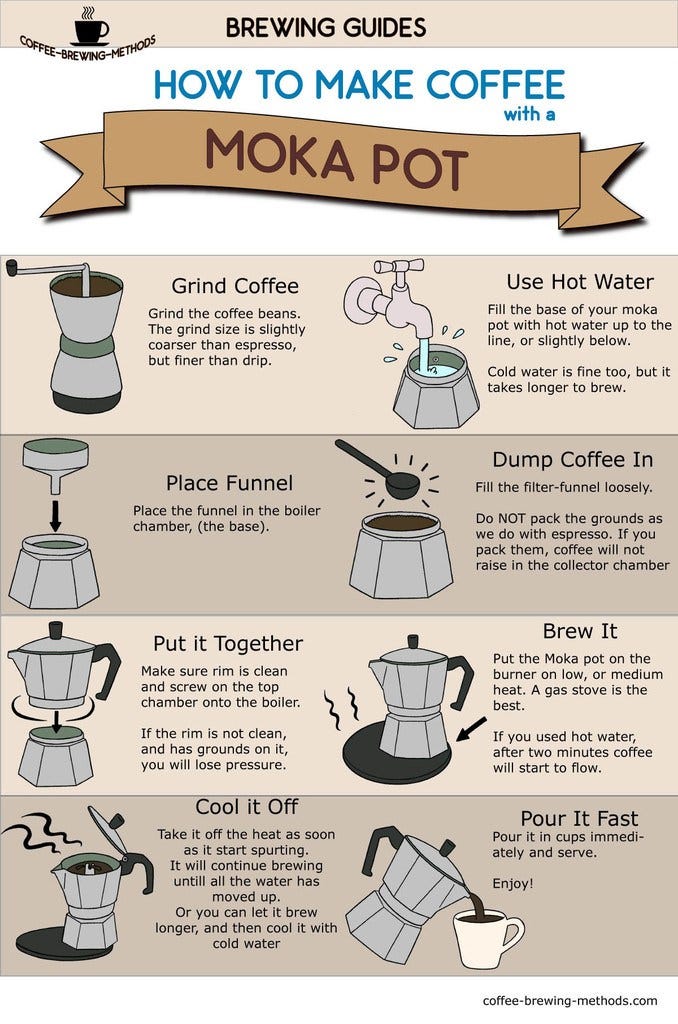The Scientific Research Behind Coffee Developing: Exactly How Temperature Level and Time Affect Your Beverage
Comprehending the science behind coffee brewing reveals that temperature and time are not mere variables but pivotal aspects that dictate the beverage's taste account and general quality. The optimum developing temperature level normally drops between 195 ° F and 205 ° F, while the duration of removal differs substantially across different approaches. This interaction of elements can result in a mug that is either frustrating or delightful. As we discover the nuances of these elements, the inquiry emerges: exactly how can one efficiently equilibrium temperature level and time to achieve that excellent mixture?
The Chemistry of Coffee Removal
The chemistry of coffee extraction dives into the detailed processes that change raw coffee beans into the fragrant beverage taken pleasure in worldwide. This change largely involves the solubility of numerous compounds present in the beans, which are affected by factors such as work dimension, water quality, and the developing approach employed.
During the developing procedure, warm water works as a solvent, removing soluble substances, consisting of high levels of caffeine, sugars, acids, and lipids, from the coffee premises. Each substance contributes to the taste account, aroma, and body of the last drink. For example, acids are accountable for tangy and brilliant notes, while oils add to an abundant mouthfeel.
The preliminary stages of brewing extract acids and sugars, leading to a pleasant level of acidity, while long term removal can lead to bitterness due to over-extraction of unwanted substances. Comprehending these chemical interactions is essential for optimizing developing strategies, as the equilibrium between extraction time and water temperature level can substantially influence the overall top quality of the coffee.
Suitable Brewing Temperatures
Finding the appropriate developing temperature is vital for opening the complete capacity of coffee flavors and fragrances - coffee brewing methods. Study suggests that the optimal array for brewing coffee exists between 195 ° F to 205 ° F(90 ° C to 96 ° C) Within this range, the removal process efficiently liquifies the desirable soluble substances in coffee beans, causing a tasty and balanced mug
Brewing at reduced temperatures, such as listed below 195 ° F(90 ° C ), may lead to under-extraction, yielding an acidic and weak brew with low-key flavors. Alternatively, brewing at temperature levels surpassing 205 ° F(96 ° C) can bring about over-extraction, creating a bitter and harsh taste because of the excessive dissolution of unwanted compounds, such as tannins.
Additionally, the optimal developing temperature can differ depending on the coffee bean type and roast degree. For instance, lighter roasts typically gain from somewhat greater temperature levels to enhance their complicated taste profiles, while darker roasts may be much better matched to lower temperatures to minimize bitterness.
Eventually, keeping accuracy in developing temperature levels is critical for achieving a harmonious balance of flavors, guaranteeing that every cup of coffee delivers a rewarding sensory experience.
Effect of Brewing Time
Brewing time plays a pivotal duty in establishing the flavor profile and total high quality of coffee. Shorter developing times can result in under-extraction, leading to a weak or sour flavor, as not adequate soluble compounds are liquified.
Ideal brewing time varies depending upon the technique used and the work dimension of the coffee. As an example, a French press typically calls for regarding 4 minutes, while coffee removal is generally finished within 25 to 30 secs. It is vital to calibrate developing time in conjunction with other variables, such as water temperature and coffee-to-water proportion, to attain the wanted taste profile.
Recognizing the influence of brewing time enables coffee lovers to refine their brewing strategies, inevitably improving the sensory experience of their mug (coffee brewing methods). With careful interest to this variable, one can open the full potential of the coffee, revealing its special attributes and nuances
Brewing Approaches and Their Impacts

For circumstances, techniques look at these guys like French press and cold brew enable for a much longer steeping time, causing a fuller body and robust taste because of enhanced removal of oils and soluble solids. Alternatively, espresso developing utilizes high stress and a much shorter removal time, generating a focused shot that stresses extreme flavors and an abundant crema.
Pour-over strategies, such as Chemex or V60, supply an even more regulated extraction process, permitting the brewer to control circulation rate and water distribution, which can boost brightness and quality. Percolation methods cycle water via the coffee grounds numerous times, leading to a stronger, typically bitter taste.
Lastly, the usage of paper filters versus steel filters can also affect the final taste; paper filters usually yield a cleaner mug by trapping oils and great particles, while steel filters allow even more oils to travel through, contributing to a fuller mouthfeel - coffee brewing methods. Recognizing these nuances can boost the coffee experience dramatically
Tips for Improving Your Brew
A well-executed mixture can change also the most basic coffee right into a remarkable experience. Grind the beans simply before making to optimize quality, guaranteeing the grind size matches your brewing method-- coarser for French press and finer for coffee.
Water quality plays a vital duty; use filteringed system water devoid of contaminations. The ideal developing temperature level varies between 195 ° F and 205 ° F(90 ° C to 96 ° C ) As well hot can swelter the coffee, while too cool may under-extract flavors.
Timing is equally important. For immersion approaches, soaking for 3 to 5 mins is ideal, whereas drip techniques commonly take around five mins. Try out mixture times to find your preferred strength.

Final Thought
In recap, the elaborate connection in between temperature and time is vital in the coffee developing procedure. Complying with ideal brewing temperature levels between 195 company website ° F and 205 ° F, along with exact timing customized per approach, guarantees the preferred flavor account is achieved. Comprehending these clinical principles empowers individuals to fine-tune their developing methods, ultimately bring about an extra balanced and satisfying coffee experience. Mastery of these factors is essential for any type of coffee lover looking for excellence in their drink.
Understanding the scientific research behind coffee developing reveals that temperature level and time are not simple variables however critical components that determine the beverage's flavor profile and general quality. Comprehending these chemical interactions is critical for maximizing developing techniques, as the balance between removal time and water temperature can considerably influence the total high quality of the coffee.Brewing time plays a crucial duty in figuring out the flavor profile and total high quality of coffee. By concentrating on these components-- bean high quality, grind dimension, water temperature level, steeping time, and ratio-- you can elevate your coffee developing process, resulting in a constantly remarkable cup.
In summary, the intricate connection between temperature level and time is paramount in the coffee brewing process.